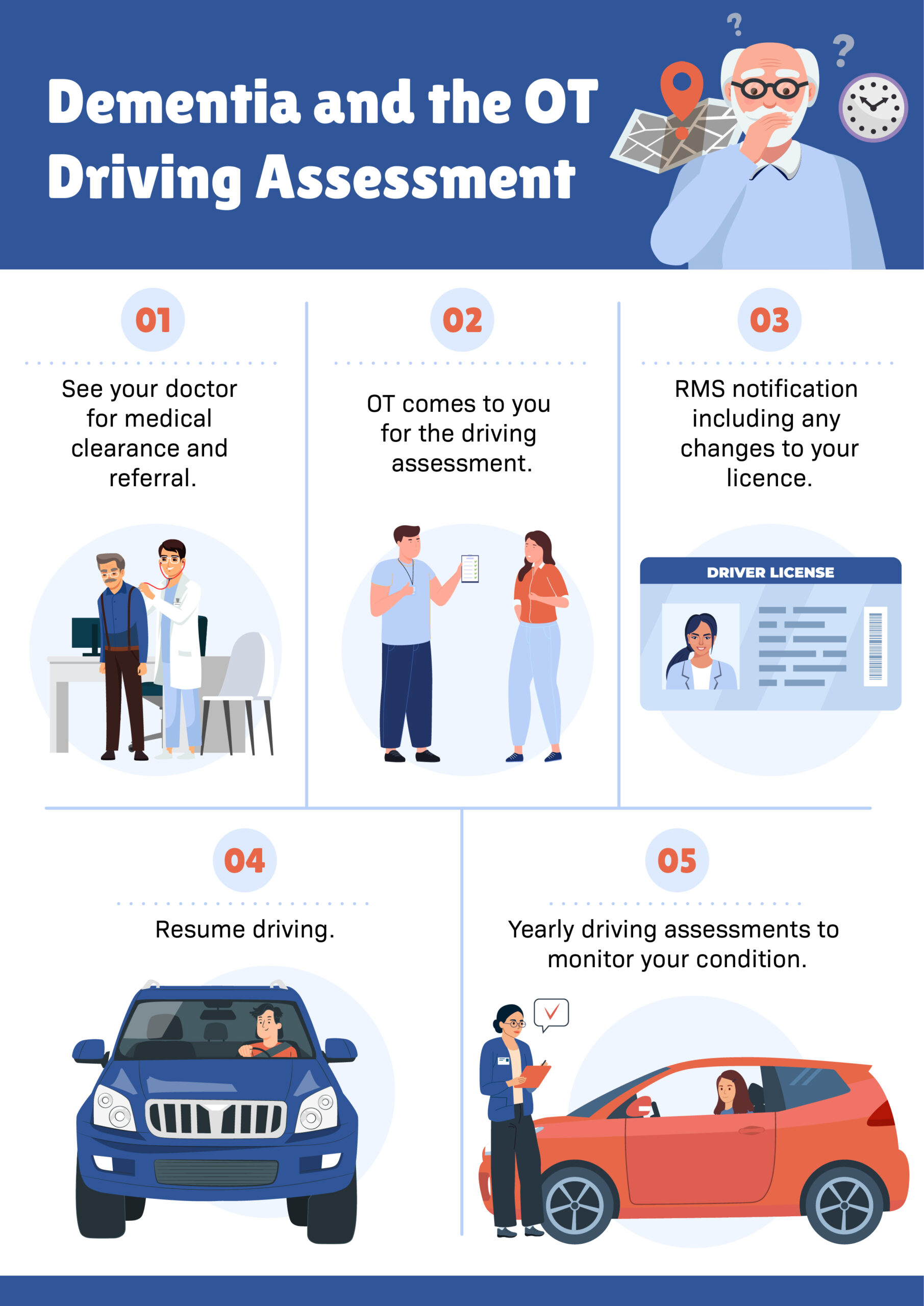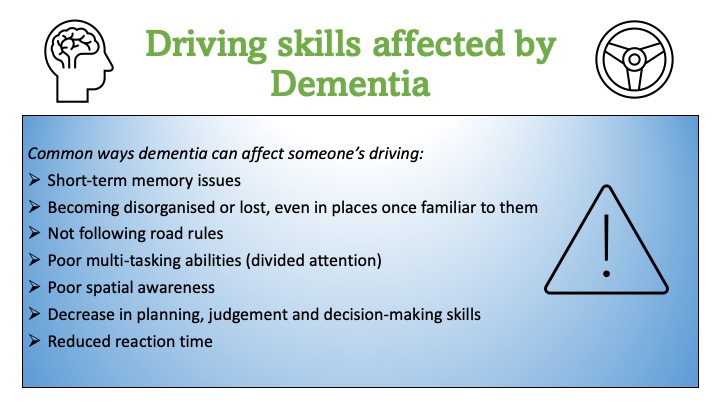Dementia explained
Dementia is an umbrella term that is used to describe general loss of cognitive functioning characterized by decreased memory, behavioural changes, loss of problem-solving, decision-making and language skills. It is caused when brain cells become damaged. A diagnosis of dementia is applied when the symptoms are severe enough that the person’s daily functioning becomes impaired. While dementia and Alzheimer’s disease are often used interchangeably, the latter is a specific brain disease and is the most common cause of dementia. The presentation and progression of dementia differs in severity between individuals and some people will deteriorate more quickly than others.

As with any disease, the best chance to improve outcomes for sufferers is to intervene early. This means that the sooner the disease’s symptoms and characteristics are recognised, the earlier professional treatment can get involved. Treatment options will depend on the type and cause of the dementia, though some forms of dementia (e.g., Alzheimer’s disease) have no known cure. Nevertheless, it is beneficial if symptoms of dementia are identified early. Common examples of early signs of dementia are:
- Short-term memory problems e.g., forgetting something that happened yesterday
- Difficulty keeping track of paying bills
- Difficulty with preparing meals
- Forgetting planned appointments
- Often losing items e.g., keys or wallet
- Becoming lost and disorganised when going outside of their neighbourhood or local area
Dementia can often become a debilitiating medical condition and over time, the person’s ability to function indpendently becomes increasingly eroded.
Effects on driving
As dementia is a cognitive condition, it can impact on a crucial component of driving: the person’s thinking skills. Specific ways dementia may affect driving is causing deficits with attention and concentration, short-term memory, decision-making, processing speed and becoming disorganised. It is a serious medical condition potentially impacting driving and thus, when someone receives this diagnosis, their condition must be monitored by their doctor. Usually, once a medical condition has been identified, the person requires annual medical reviews (but may be more frequent depending on the situation).
When an individual has a diagnosis of dementia, they have a legal requirement to notify the Roads and Maritime Service (RMS) of their condition. This also applies for any medical issues potentially affecting driving. Many people do not realise this and it is common for their treating doctor to make the RMS notification on their behalf. The doctor will complete the ‘RMS medical fitness to drive form’, where the doctor will make a decision regarding the person’s suitability to continue driving due to their medical condition. The doctor will perform their medical assessment on the person, then decide between one of 3 options when filling out the form:
- The condition is not currently affecting the person’s driving and they can continue to drive as normal.
- It is unclear if the condition is affecting driving and the person must undergo an Occupational Therapy (OT) driving assessment to investigate further.
- The condition is affecting the person’s driving and they are no longer medically fit to drive. Their licence will be cancelled.
Due to the nature and severity of a dementia diagnosis, doctors will often choose the second option and refer the person for an OT driving assessment. With new diagnoses of dementia, doctors will not usually recommend to cancel the person’s licence immediately, unless the illness is at an advanced stage. As driving is a practical activity, doctors are limited in their ability to assess the specific impact of Dementia on individual’s driving capacity. A medical assessment is an effective way to determine certain aspects of a person’s cognitive functioning, however to fully discover the effects of any cognitive decline on driving, a practical driving assessment is necessary. Therefore, doctors will often state on the Fitness to Drive form that the person requires an Occupational Therapy driving assessment.
The driving assessment
Once the doctor has referred the person for an OT driving assessment, they will need to organise an appointment with a qualified Driver Trained OT. It is important to note that these OTs are specialized and have done specific qualifications to be able to complete these assessments. The primary aim of the Occupational Therapy driving assessment is to determine if the person is driving safely and making the correct decisions. Its focus is specifically on how dementia may be affecting driving at this point in time. The Occupational Therapist is not too concerned about minor errors or poor driving habits. They are most concerned about how the illness is affecting factors such as the person’s decision-making, processing, attention and reaction time when driving.
The following are common examples of driving tasks that the Occupational Therapist will assess during the assessment:
- Changing lanes
- Stopping at controlled and uncontrolled intersections
- Entering and exiting roundabouts
- Observing and responding to hazards e.g. pedestrians crossing the road
- Responding to road signs
The assessment will begin with the person driving in a low traffic environment to allow them to become familiar with the car. The assessment will then progress to busy and complex traffic. The person will be encouraged to continue driving and the driving instructor will not physically intervene unless an accident or collision is about to occur. In this scenario, the person has committed a ‘critical error’ as they have not been able to respond appropriately to a traffic situation. This means that the driving instructor has had to either take control of the steering wheel or apply the emergency brake to avoid an accident. In these instances, this would cause the person to fail the assessment, as their dementia is adversely affecting their driving. Depending on the nature of the errors made and their overall driving performance, the Occupational Therapist may recommend some driving lessons to give them an opportunity to improve their driving. The lessons will then be followed by an OT driving reassessment, to allow the person a reasonable chance to maintain their licence. Moreover, other restrictions (e.g. a kilometre restriction on their licence) are options to maintain one’s licence. However, if it is evaluated that the person’s dementia is severe and further lessons will not improve their driving, the Occupational Therapist may recommend cancellation of their licence.
If the Occupational Therapist is able to determine that the symptoms of dementia is not currently affecting the person’s ability to drive safely, then this will be reported to the RMS and the person is able to continue driving. Due to the degenerative nature of dementia, regular (usually yearly) medical assessments and OT driving reassessments will be required to monitor the person’s driving capacity. It must be noted that due to dementia being a progressive medical condition, at some point, the person will have to face the prospect of no longer being fit to drive. Understandably, this is often difficult for people to accept, requiring careful navigation and liaison with the person, their family members and their doctor.





